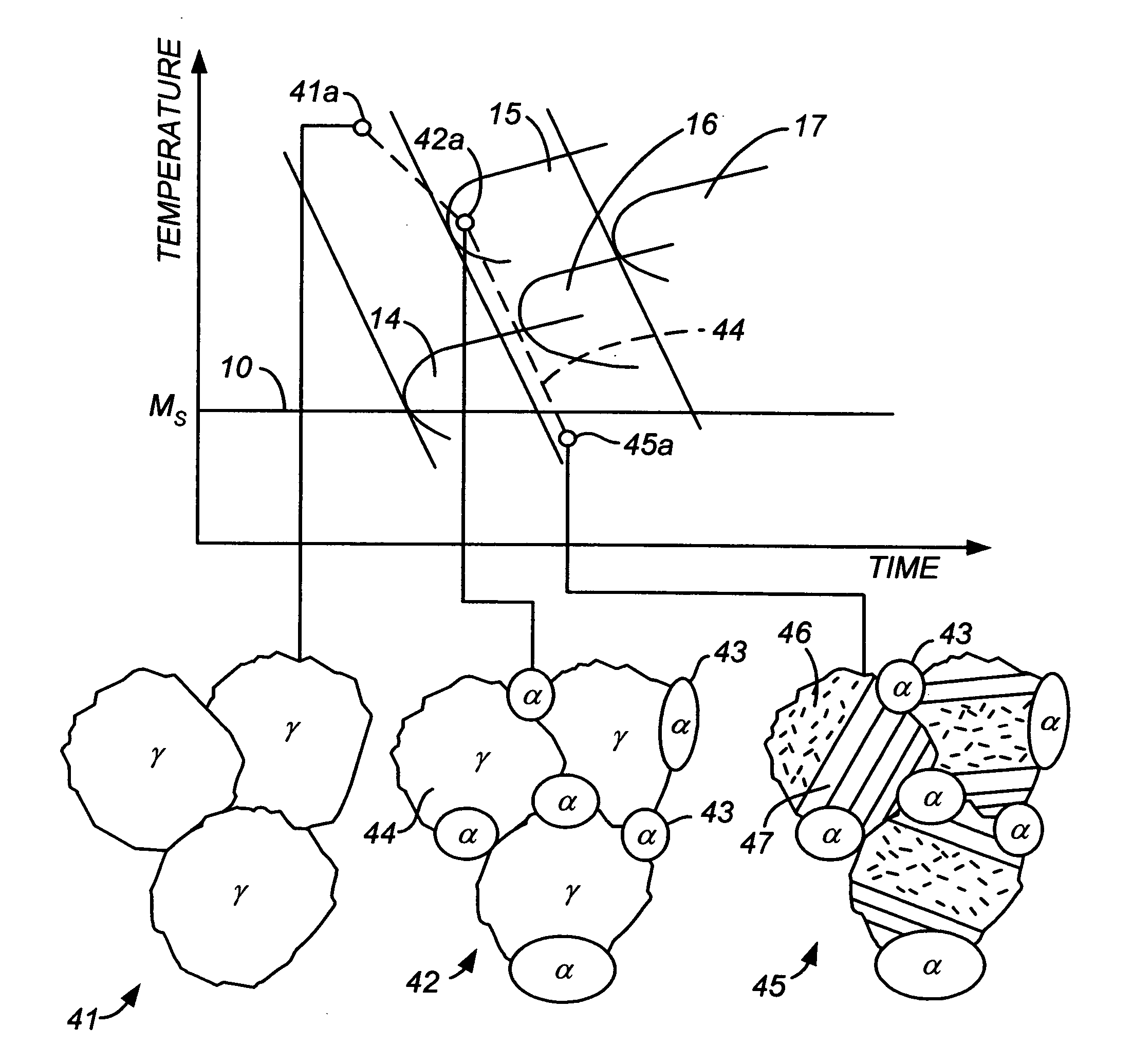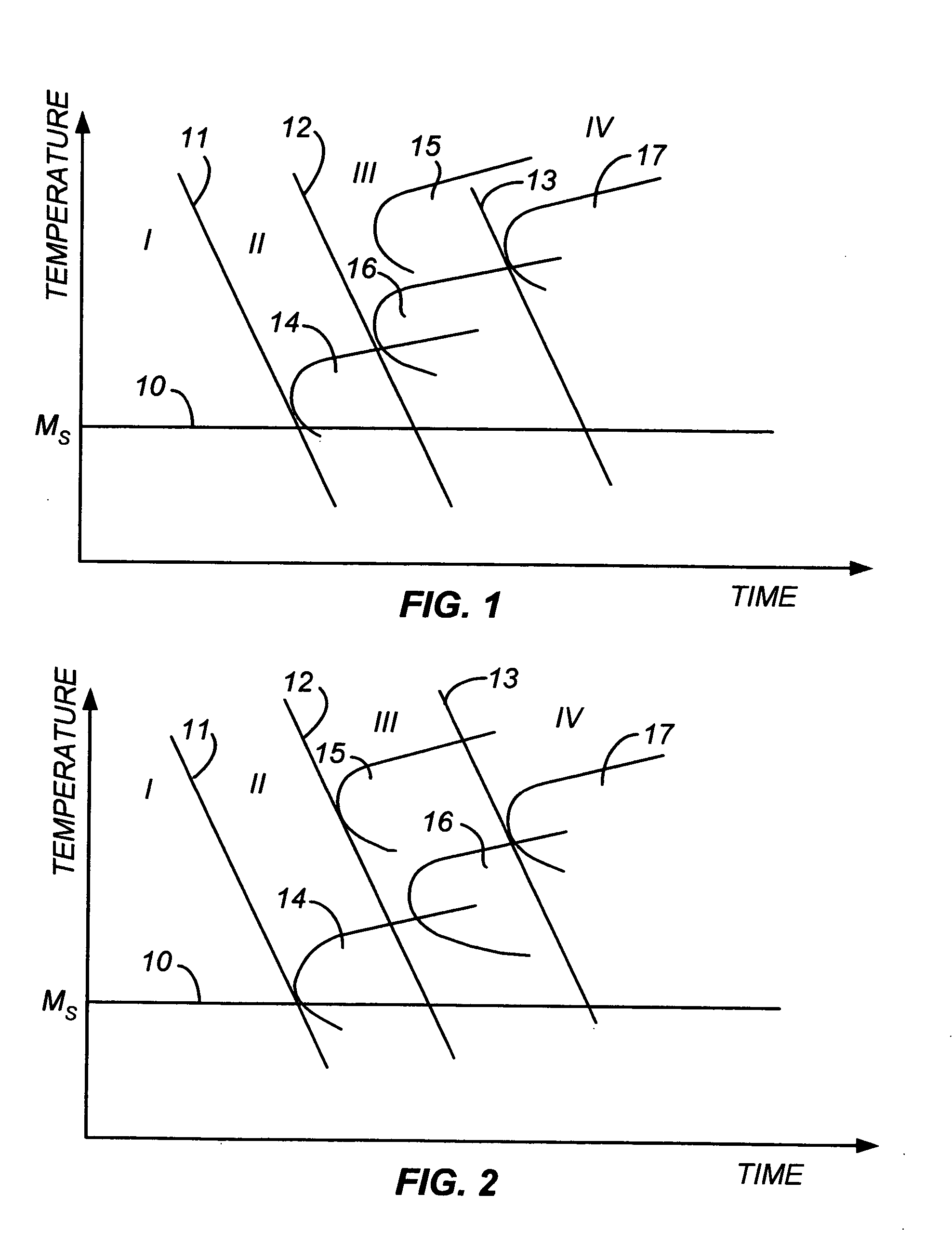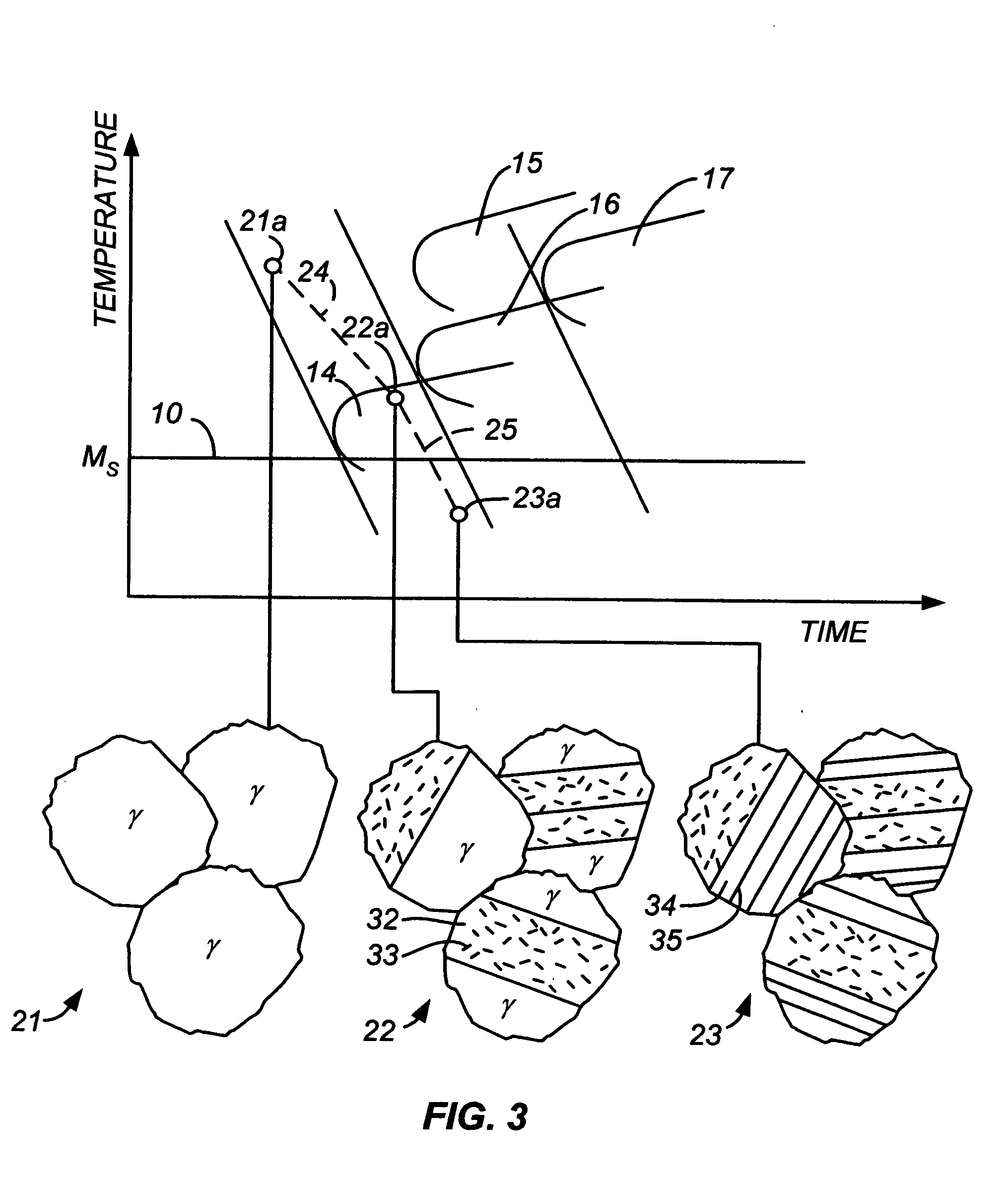High-strength four-phase steel alloys
- Summary
- Abstract
- Description
- Claims
- Application Information
AI Technical Summary
Benefits of technology
Problems solved by technology
Method used
Image
Examples
example 1
[0048] For a steel alloy containing 9% chromium, 1% manganese, and 0.08% carbon, cooling from the austenitic phase at a rate faster than about 5° C. / sec will result in a martensite-austenite lath microstructure that contains no carbide precipitates. If a slower cooling rate is used, namely one within the range of about 1° / sec to about 0.15° C. / sec, the resulting steel will have a microstructure containing regions of martensite laths alternating with thin films of austenite as well as lower bainite regions (ferrite grains with small carbide precipitates within the ferrite) but no carbide precipitates at the phase interfaces, and will therefore be within the scope of the present invention. If the cooling rate is lowered further to below about 0.1° C. / sec, the resulting microstructure will contain fine pearlite (troostite) with carbide precipitates at the phase boundaries. Small amounts of these precipitates can be tolerated, but in preferred embodiments of this invention, their presen...
example 2
[0050] For a steel alloy containing 4% chromium, 0.5% manganese, and 0.08% carbon, cooling from the austenitic phase at a rate faster than about 100° C. / sec will result in a martensite-austenite lath microstructure that contains no carbide precipitates. If a slower cooling rate is used, namely one that is less than 100° C. / sec but higher than 5° C. / sec, the resulting steel will have a microstructure containing regions of martensite laths alternating with thin films of austenite as well as lower bainite regions (ferrite grains with small carbide precipitates within the ferrite) but no carbide precipitates at the phase interfaces, and will therefore be within the scope of the present invention. If the cooling rate is lowered further to a range of 5° C. / sec to 0.2° C. / sec, the resulting microstructure will contain upper bainite with carbide precipitates at the phase boundaries, thereby falling outside the scope of this invention. This can be avoided by using a slow cooling rate followe...
PUM
| Property | Measurement | Unit |
|---|---|---|
| Temperature | aaaaa | aaaaa |
| Temperature | aaaaa | aaaaa |
| Length | aaaaa | aaaaa |
Abstract
Description
Claims
Application Information
 Login to View More
Login to View More - R&D
- Intellectual Property
- Life Sciences
- Materials
- Tech Scout
- Unparalleled Data Quality
- Higher Quality Content
- 60% Fewer Hallucinations
Browse by: Latest US Patents, China's latest patents, Technical Efficacy Thesaurus, Application Domain, Technology Topic, Popular Technical Reports.
© 2025 PatSnap. All rights reserved.Legal|Privacy policy|Modern Slavery Act Transparency Statement|Sitemap|About US| Contact US: help@patsnap.com



